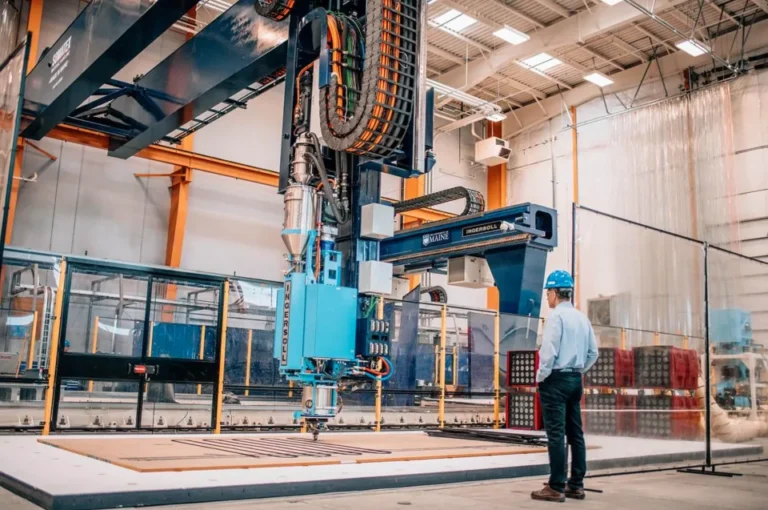In theory, it can be used to create bridges, military vehicles, and other things.
The largest 3D printer for polymers in the world was been unveiled by the University of Maine. The Factory of the Future 1.0 (FoF 1.0) printer is capable of printing things up to 96 feet long by 32 feet wide by 18 feet high. Considering that it can print up to 500 pounds per hour, it is also fairly quick. That is approximately three persons every hour.
It is capable of dynamically switching between printing methods to accommodate the requirements of intricate tasks. The printer has the ability to switch between continuous tape layup, robotic arm operations, large-scale additive manufacturing, and subtractive manufacture. The printer is specially suitable for a number of industries, including housing, infrastructure, and the creation of military vehicles, thanks to these technology.
According to Dr. Habib Dagher, the director of the University of Maine’s Advanced Structures and Composites Center, “you can basically demolish it, grind it up if you choose” and “do it again” because the majority of the material it produces is recyclable. The printer gives biobased materials—like wood leftovers—priority in order to achieve this.
This technology looks like a terrific method to swiftly build a lot of affordable housing, and that is precisely what some of its supporters hope to do. According to MaineHousing’s Development Director Mark Wiesendanger, “Maine needs a projected 80,000 more houses by 2030, many expressly for people with earnings at or below the regional median income.” Through the use of plentiful wood leftovers from Maine sawmills, this initiative further reduces prices and develops a new method of building high-quality, reasonably priced housing. The printer “may one day generate entire neighborhoods,” according to AP. According to the specifications, it should be able to construct a simple single-story house in about 80 hours.
But hey, this is America; it is not like this was designed with the intention of aiding the homeless. The Department of Energy, the Department of Defense, and the Army Corps of Engineers provided money to UMaine researchers. Since these governmental organizations would want a return on their investment, it is probable that the printer will also be utilized to create lightweight, quickly deployable ships, such as submarines and other marine vehicles. The printer was deemed “invaluable to our national security” by Senator Susan Collins.
The world’s largest 3D printer, held previously by a brother printer of the FoF 1.0 located on the UMaine campus. A 600 square foot single-family home constructed of wood fiber and bioresin components has previously been produced using it. But the new printer is four times larger. Fortunately, the two models can work on various facets of the same tasks at the same time and share the same workspace.
The Green Engineering and Materials (GEM) Factory of the Future, a new research facility at the University of Maine, is scheduled to open in the near future. With the primary goal of “facilitating and scaling up more sustainable production techniques,” this will be the new location for both printers. In the future, it is probably going to host even bigger printers. Dr. Dagher said ABC News, “We are learning from this to develop the next one.”

